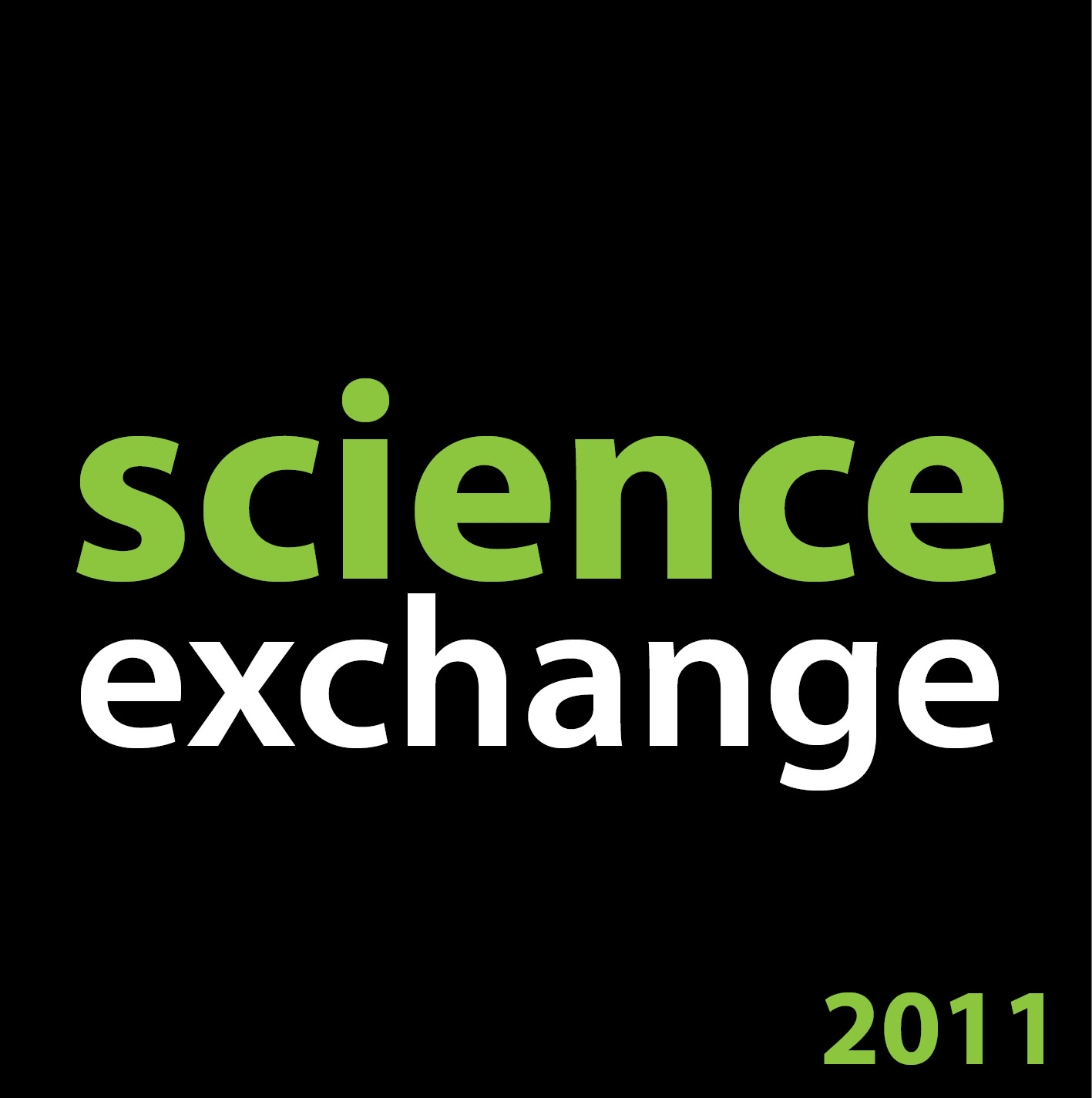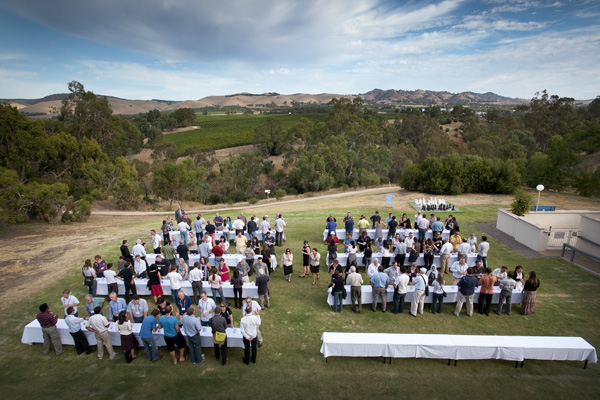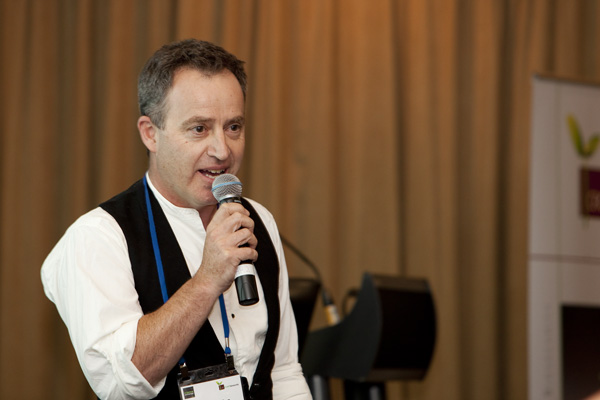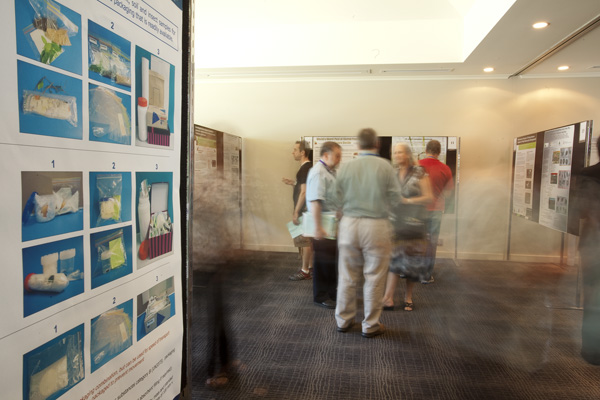CRCNPB family hits the Barossa for Science Exchange 2011

The CRCNPB descended on the Barossa Valley in early February for its Science Exchange, with 155 delegates including researchers, students, staff, Board members, the Participants Committee, industry and government representatives, all meeting to exchange ideas and showcase a range of research projects.
While the official proceedings did not kick-off until Wednesday 9 February, guests began arriving at the Novotel from as early as the Sunday evening, with a series of Board meetings, student workshops and other briefings taking place over the first few days.
By the Tuesday evening, most guests had arrived and joined together for the first time for an informal poolside barbeque dinner, which provided a great opportunity for the majority of attendees to reacquaint with their peers.
On the first morning of the official program, delegates were welcomed by the CRCNPB Chairman, John Lovett. John was followed by the Chief Executive Officer, Simon McKirdy. Simon talked through all things CRCNPB, before presenting a special award to the CRCNPB’s Communication Manager, Kate Scott. Simon recognised Kate’s outstanding contribution to the CRCNPB over a number of years. Simon announced that regrettably Kate would be leaving the CRC, so thanked her and wished her well in her future endeavours.
Simon then introduced Martin Barlass from Victoria’s Department of Primary Industries - and Chair of the Participants Committee - who chaired the opening session on Communication and Capacity. The session included six presentations, which provided an interesting insight into how communication and capacity building is implemented throughout various research projects.
The second session of the Science Exchange, Genetics, Biology and Ecology, was chaired by Industry & Investment NSW’s Shane Hetherington and included a number of interesting presentations from PhD students. One presentation which drew particular interest from the audience was Anne Rathe’s, who looked into the role of native plants during an insect incursion with a focus on the glassy-winged sharpshooter. Mike Cole from the Department of Agriculture, Fisheries and Forestry chaired the final session of presentations for the opening day, Pest Identification, which also included a majority of presentations from the PhD students.
The afternoon gave participants time to wander through a poster session at their own pace, with everyone encouraged to submit their votes for the People’s Choice Award, which was to be awarded at a later stage during the event. There were 14 posters on display on the opening day covering the presentation topics from the morning.
The first official social function of the Science Exchange kicked off with a ‘speed networking’ session, to encourage participants to mingle and network outside their usual groups. Everyone seemed to take on the challenge of this enjoyable but productive event.

Participants take on the challenge of 'speed networking' in the Barossa Valley.
From speed networking, participants moved on to dinner, at which Board Director John Sandow provided a humorous MC performance and John Lovett gave a presentation on CABI’s Invasive Species Compendium. Another highlight of the evening was the trivia quiz, which was hosted by David ‘Eddie McGuire’ Eagling.

David Eagling takes the reins as quiz master during the trivia quiz.
The second morning began with a session chaired by Grains Research and Development Corporation’s Rohan Rainbow on the topic of Tools Detection and Diagnostics and was followed by the second and final poster session, which displayed 17 posters. The poster session also provided a further opportunity for networking and a chance to discuss other colleagues’ projects.

Guests have time to mingle and discuss the poster session.
Two more presentation sessions were held throughout the afternoon, with Phil Clamp from GrainCorp chairing the Sampling Design and Analysis session while the South Australia Research and Development Institute’s Kathy Ophel-Keller chaired Eradication and Control. The Participants Committee met throughout the final part of the afternoon which gave other attendees the opportunity to conduct project meetings they hadn’t yet had time for.
The evening was spent offsite at Langmeil Winery, where the Awards Dinner was held. More information on the Awards Dinner, including all the winners, can be read about in the Awards Dinner article.
The final morning of the conference saw Plant Health Australia’s Rod Turner launching a session on Predicting Incursions and Spread, with fewer numbers in attendance than the first two days following the previous night’s festivities. A number of the morning presentations were presented by PhD students, with the winner for the best PhD presentation coming from this session, John Weiss for his talk on Using TOPS to identify hot spots for rust incursion management.
Following morning tea, a number of the slow risers had rolled in to see the Decision Making presentations, which were chaired by Shashi Sharma from the Department of Agriculture and Food, Western Australia. A highlight of this session was Mark Whattam’s presentation on AQIS’s operational science program and R&D challenges for CRC. Mark’s outstanding presentation was rewarded with the Board Award for Best Oral Presentation.
The Science Exchange was wrapped up with a closing speech from John Lovett, who reflected on a wonderful event, thanked everyone for their attendance and for making the Science Exchange so successful. He also presented John Weiss and Mark Whattam with their awards for the best PhD and best oral presentations. John Lovett closed the exchange by reminding everyone that the CRCNPB needs their support in its efforts to get the rebid up this year.
With a total of 46 presentations (up from 34 at the 2009 Science Exchange) and 31 scientific posters showcased, a great deal of discussion and collaboration was initiated between all attendees, in what proved to be a wonderful event.
All abstracts from the Science Exchange will be available in the near future under ‘Research Publications’ on the website.
Photographs by Barossa Photo Company. The full Science Exchange album is available here.

